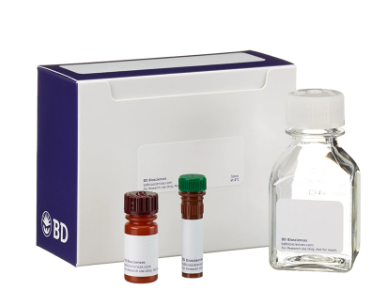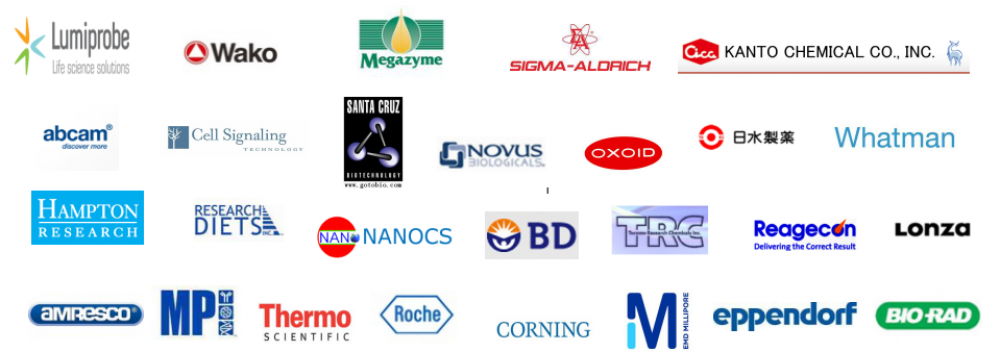细胞凋亡是胚胎发育和维持组织稳态的正常生理过程。凋亡过程具有一定的形态学特征,包括质膜不对称和附着的丧失、细胞质和细胞核的凝聚以及核小体间DNA的分裂。质膜的丢失是最早的特征之一。在凋亡细胞中,细胞膜磷脂磷脂酰丝氨酸(PS)从质膜的内叶转移到外叶,从而使PS暴露于细胞外环境。膜联蛋白V是一种35-36 kDa的Ca2+依赖性磷脂结合蛋白,对PS具有高亲和力,并与暴露PS的细胞结合。膜联蛋白V可以偶联到包括FITC在内的荧光染料上。这种格式保留了对PS的高亲和力,因此可以作为流式细胞术分析细胞凋亡的敏感探针。由于PS外化发生在细胞凋亡的早期阶段,因此FITC Annexin V染色比基于细胞核变化(如DNA断裂)的检测更能识别细胞凋亡的早期阶段。
Apoptosis is a normal physiologic process which occurs during embryonic development as well as in maintenence of tissue homeostasis. The apoptotic program is characterized by certain morphologic features, including loss of plasma membrane asymmetry and attachment, condensation of the cytoplasm and nucleus, and internucleosomal cleavage of DNA. Loss of plasma membrane is one of the earliest features. In apoptotic cells, the membrane phospholipid phosphatidylserine (PS) is translocated from the inner to the outer leaflet of the plasma membrane, thereby exposing PS to the external cellular environment. Annexin V is a 35-36 kDa Ca2+ dependent phospholipid-binding protein that has a high affinity for PS, and binds to cells with exposed PS. Annexin V may be conjugated to fluorochromes including FITC. This format retains its high affinity for PS and thus serves as a sensitive probe for flow cytometric analysis of cells that are undergoing apoptosis. Since externalization of PS occurs in the earlier stages of apoptosis, FITC Annexin V staining can identify apoptosis at an earlier stage than assays based on nuclear changes such as DNA fragmentation.
 Components
Components
Part No.
Description
Size
51-65874X
FITC Annexin V
0.5 mL (1 ea)
51-66211E
Propidium Iodide Staining Solution
2 mL (1 ea)
51-66121E
10X Annexin V Binding Buffer
50 mL (1 ea)
PREPARATION AND STORAGE
Store undiluted at 4°C and protected from prolonged exposure to light. Do not freeze.
PRODUCT NOTICES
1.Since applications vary, each investigator should titrate the reagent to obtain optimal results.
2.Source of all serum proteins is from USDA inspected abattoirs located in the United States.
3.Caution: Sodium azide yields highly toxic hydrazoic acid under acidic conditions. Dilute azide compounds in running water before discarding to avoid accumulation of potentially explosive deposits in plumbing.
4.Please refer to www.bdbiosciences.com/pharmingen/protocols for technical protocols.
